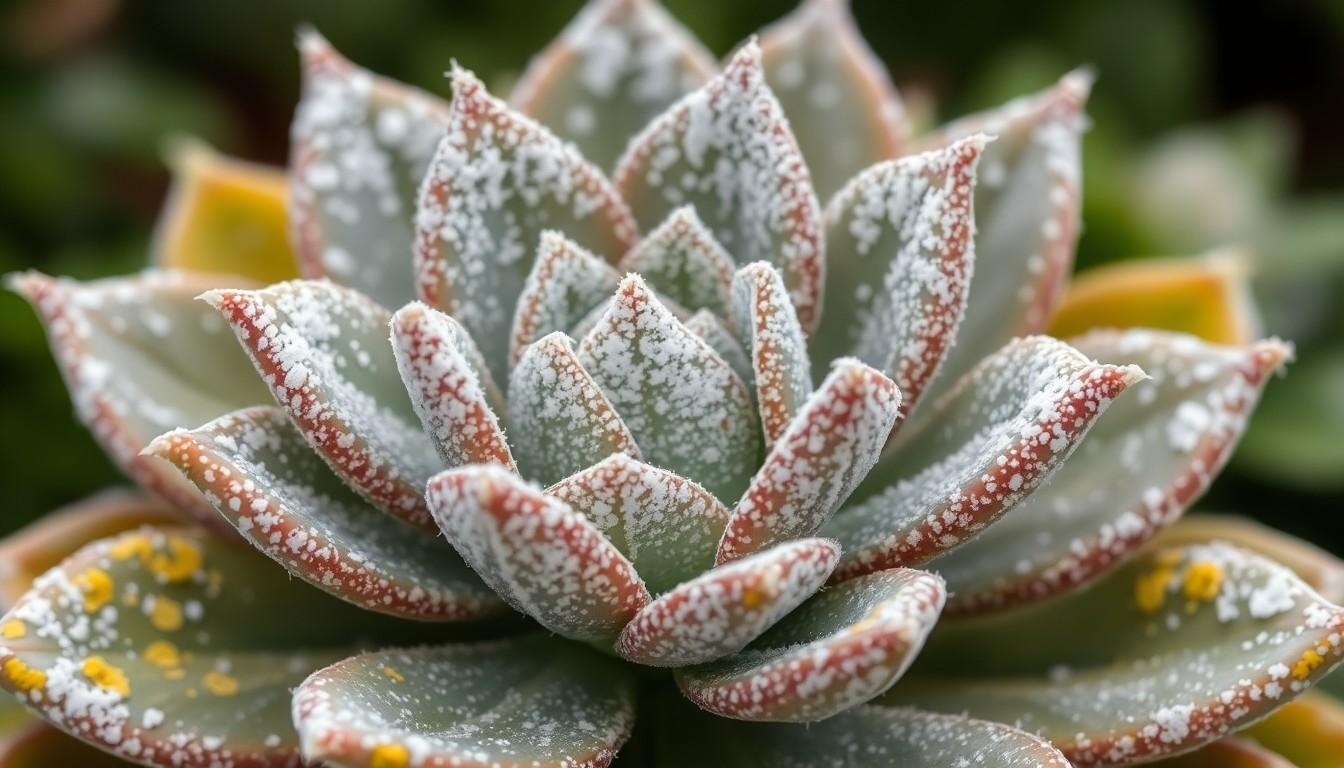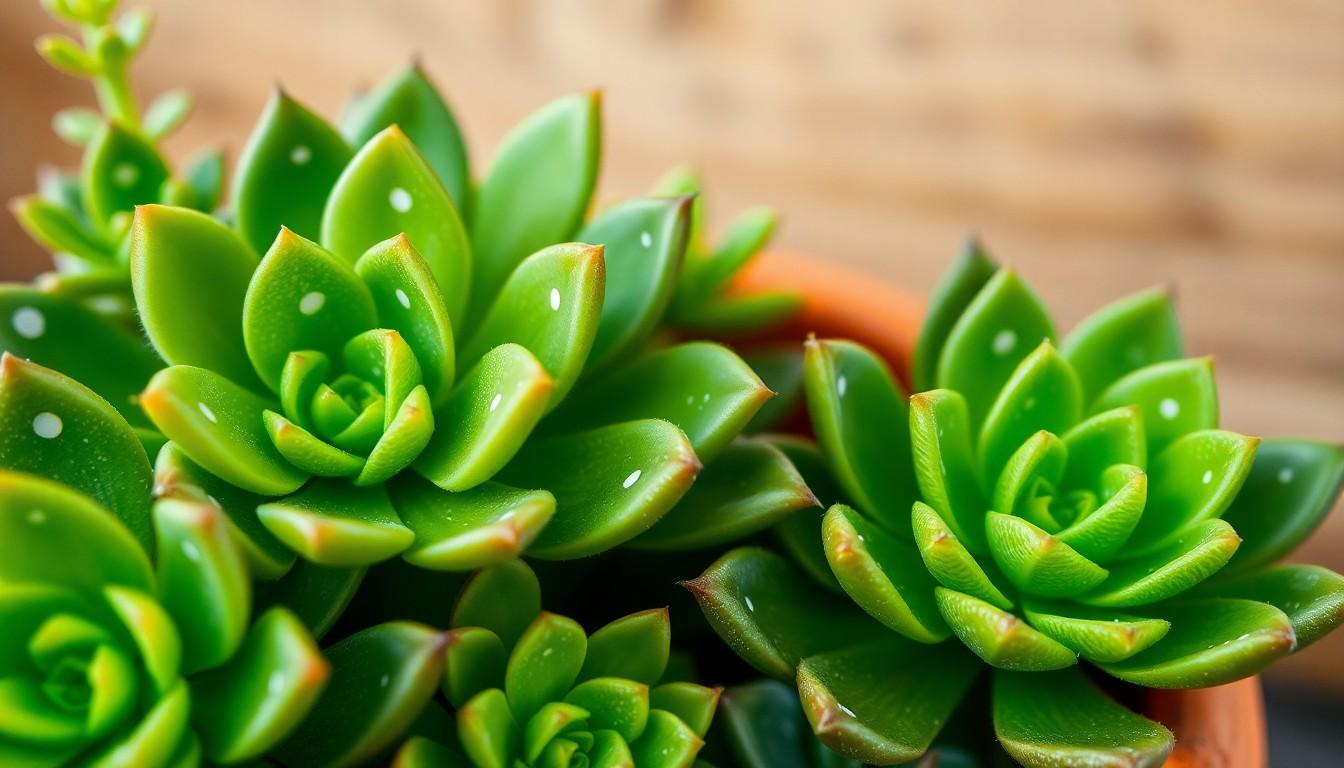Succulents are the rock stars of the plant world—low maintenance, vibrant, and just a tad sassy. But what happens when these green divas start sporting white spots? It’s like they decided to wear polka dots to a black-tie event. While it might seem alarming, those spots could be signaling a party of pests, powdery mildew, or even a case of overwatering.
Understanding White Spots on Succulents
White spots on succulents often indicate underlying issues that require attention. Various factors contribute to these spots, with pest infestations being a common culprit. Mealybugs, for example, leave a cotton-like residue that appears white against the green of the plant. Inspecting the leaves and soil periodically helps identify these pests early.
Another possibility is powdery mildew, a fungal disease characterized by a white, powdery coating. This condition typically arises in overly humid environments, affecting air circulation around the plant. Ensuring good airflow and adequate sunlight can minimize the risk of powdery mildew.
Overwatering also plays a significant role in the development of white spots. When succulents receive too much water, their roots can rot, leading to discoloration. Keeping a consistent watering schedule allows the soil to dry out fully between waterings, which helps maintain the plant’s health.
In some instances, mineral buildup from hard water may create white spots on the surface of the leaves. Flushing the soil with distilled water can reduce this accumulation. Applying a balanced fertilizer diluted to half strength also helps prevent nutrient-related issues that can contribute to spotting.
Identifying the exact cause of the white spots often requires careful observation. Addressing the problem immediately will help restore the succulent’s health and protect its vibrant appearance.
Common Causes of White Spots

White spots on succulents can arise from several different factors. Identifying these causes helps address issues effectively.
Powdery Mildew
Powdery mildew frequently appears as a white, powdery film on succulent leaves. This fungal disease thrives in humid, poorly ventilated environments. High humidity levels contribute to its development. Symptoms often include the formation of yellowish leaves, and if left untreated, it can severely hinder growth. Maintaining adequate airflow and providing ample sunlight reduces the risk significantly. Using fungicides may help control infections if the infestation persists.
Mealybugs
Mealybugs appear as small, white, cottony masses on succulents. They feed on plant sap, weakening the succulent over time. High populations lead to stress, evident in yellowing leaves and stunted growth. Regularly inspecting plants can help with early detection. Treating mealybugs requires applying insecticidal soap or neem oil to affected areas, ensuring thorough coverage. Removing mealybugs by hand or using cotton swabs dipped in alcohol also proves effective.
Sunburn
Sunburn manifests as white or brown patches on succulent leaves. Excessive sunlight exposure triggers this condition, often occurring after a sudden increase in light. Leaf discoloration may indicate damage, and prolonged exposure poses a serious threat. To prevent sunburn, gradually acclimate succulents to brighter conditions. Providing filtered sunlight during peak hours helps protect vulnerable plants. Relocating succulents into partial shade can also alleviate stress.
Prevention Techniques
Maintaining the health of succulents involves several key preventative strategies to avoid the emergence of white spots. Addressing water habits and light exposure ensures these plants thrive without issues.
Proper Watering
Overwatering remains a common pitfall leading to white spots. Succulents prefer a thorough soaking followed by dry soil before the next watering. Checking the soil moisture helps determine when to water. Soil should dry completely between waterings, allowing roots to breathe. Using pots with drainage holes prevents water accumulation, reducing the risk of root rot. Applying distilled water minimizes mineral buildup that causes unsightly spots. Adhering to a consistent watering schedule fosters a healthier plant overall.
Ideal Light Conditions
Light conditions play a crucial role in succulent care. These plants thrive in bright, indirect sunlight. Gradual acclimatization to brighter environments can prevent sunburn, which leads to white or brown patches. Ensuring ample airflow keeps humidity levels balanced, reducing the likelihood of powdery mildew. Utilizing sheer curtains allows filtered sunlight during peak hours, meeting succulents’ needs without overwhelming them. Regularly evaluating light exposure helps maintain vibrant foliage while avoiding white spots.
Treatment Options
Addressing white spots on succulents involves various strategies tailored to the specific issue. Implementing natural remedies and chemical treatments can effectively restore succulent health.
Natural Remedies
Garlic spray can deter pests, as it naturally repels mealybugs. Mixing one part crushed garlic with ten parts water creates an effective solution. A simple soap solution made with mild dish soap effectively cleans leaves and combats powdery mildew. Applying a diluted mixture directly onto affected areas promotes healing. Neem oil, derived from the seeds of the neem tree, functions as a natural insecticide and fungicide. Regular applications every two weeks can significantly reduce infestations. Proper airflow is vital, so improving ventilation around the plants helps prevent mildew and sunburn. Lastly, removing affected leaves supports overall plant health, stopping the spread of issues.
Chemical Treatments
Insecticidal soap acts as a swift solution for mealybugs and other sucking insects. Applying it according to product instructions ensures optimal effectiveness without harming the plant. Systemic insecticides can provide long-lasting control, targeting pests from within the plant. Diluting the product correctly is crucial to prevent damage. For powdery mildew, fungicides specifically formulated for succulent plants effectively eliminate the fungus. Applying fungicides during early symptoms helps prevent further spread. It’s essential to follow all application guidelines to protect the plant. Maintain consistent monitoring to determine when to reapply treatments, ensuring healthy growth without the presence of white spots.
Case Studies
Various species of succulents show susceptibility to white spots caused by several factors. Popular options such as Echeveria, Sedum, and Haworthia often exhibit these symptoms. Echeveria can develop powdery mildew due to high humidity, while Sedum attracts mealybugs with its fleshy leaves. Haworthia may experience sunburn when placed in direct sunlight for prolonged periods. Identifying the specific type of succulent aids in determining the appropriate prevention and treatment strategies.
Numerous recovery stories highlight successful interventions for succulents affected by white spots. One case involved a rotting Echeveria revived with careful watering adjustments and improved airflow. The owner observed a significant reduction in powdery residue using neem oil, which led to vibrant new growth. Another success featured Sedum treated with insecticidal soap, removing mealybugs and restoring plant health. Regular inspections and adjusted care practices ultimately allow for the revival of struggling succulents, proving that timely action plays a critical role in their recovery.
Conclusion
Addressing white spots on succulents is essential for maintaining their health and beauty. By staying vigilant and recognizing the signs of pests or fungal issues, plant owners can take proactive measures to prevent further damage. Regular inspections and appropriate care practices play a crucial role in ensuring succulents thrive.
Implementing preventive strategies like proper watering, optimal lighting, and good airflow can significantly reduce the risk of white spots. When issues arise, timely intervention with natural or chemical treatments can restore succulents to their vibrant state. With attentive care, these resilient plants can continue to bring joy and color to any space.

